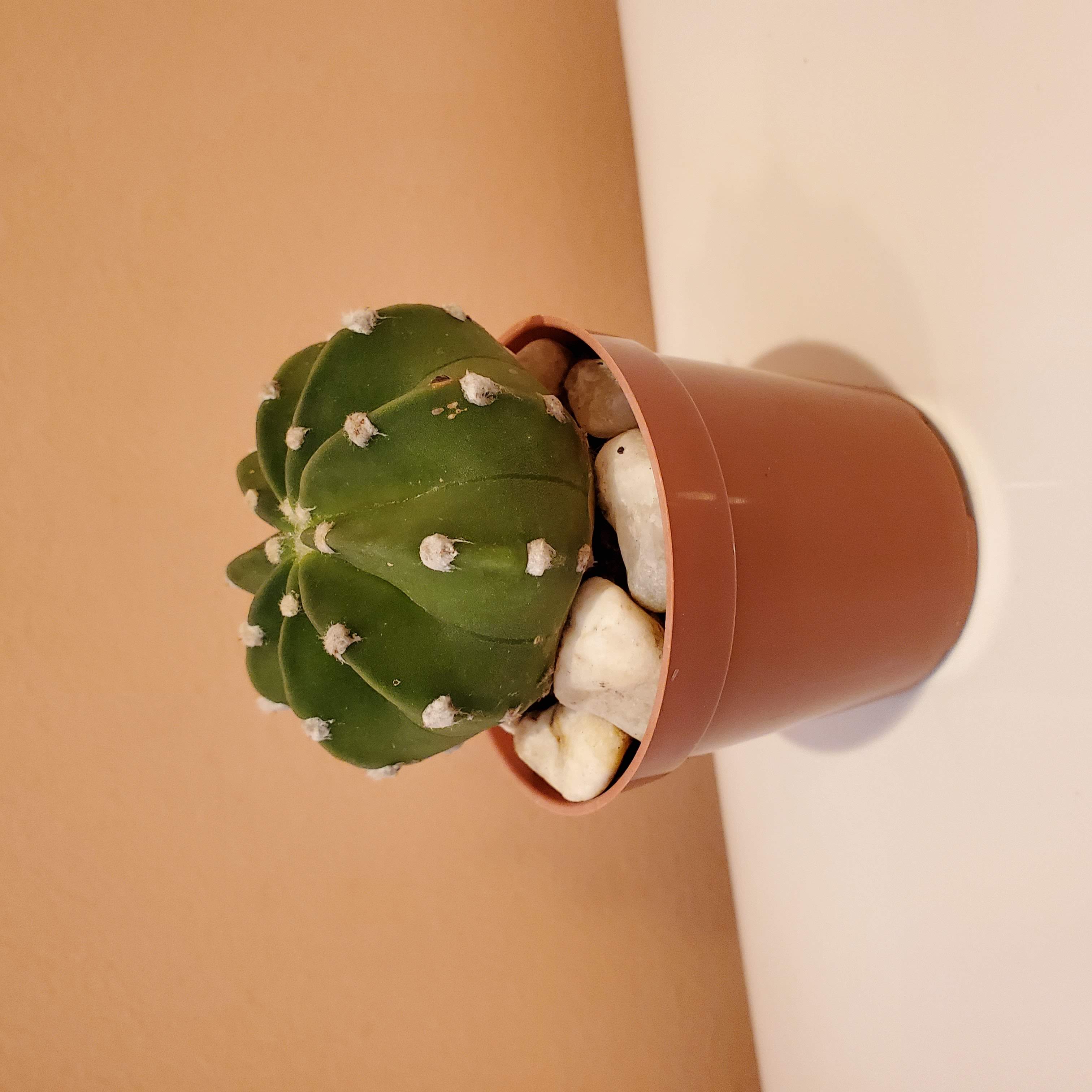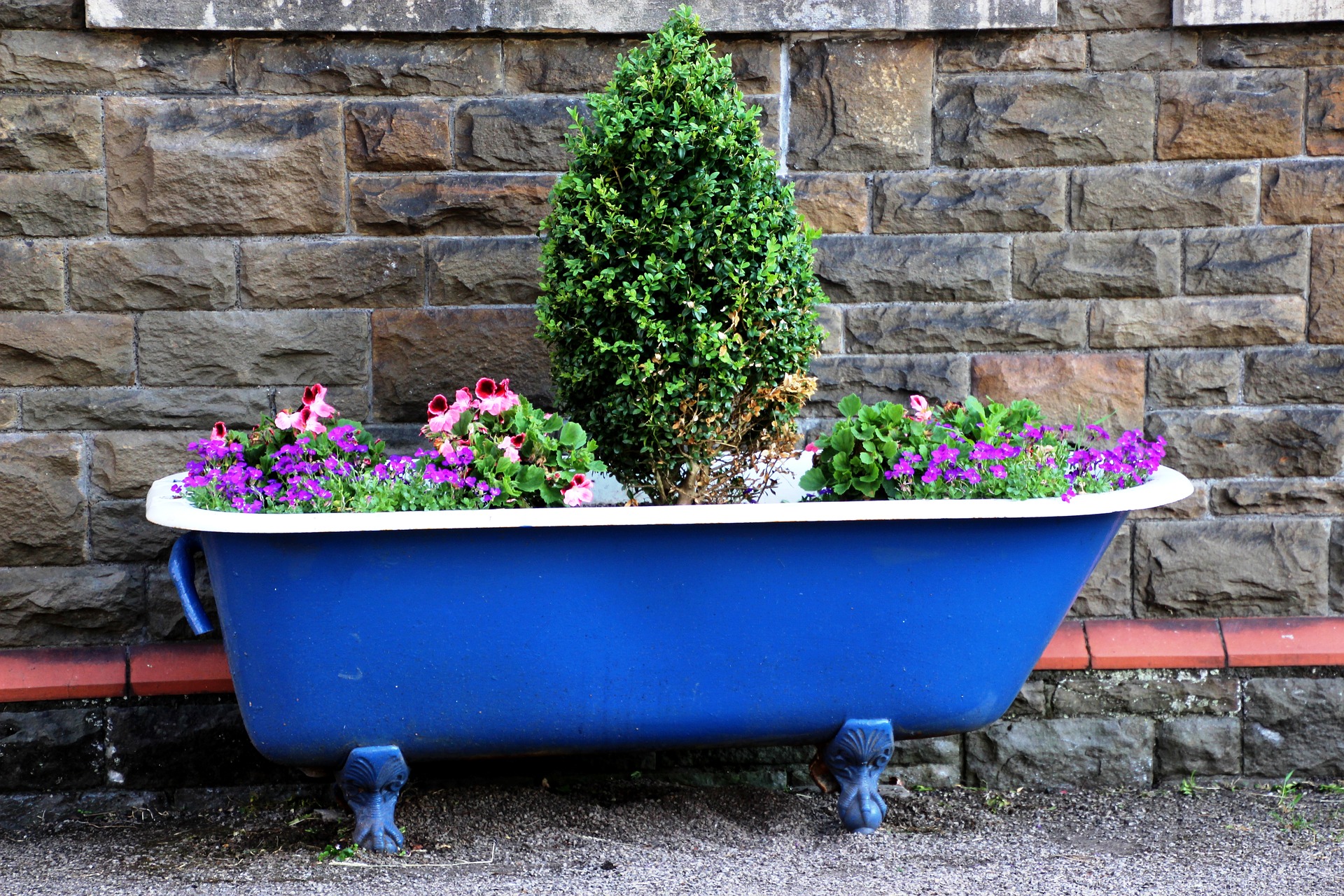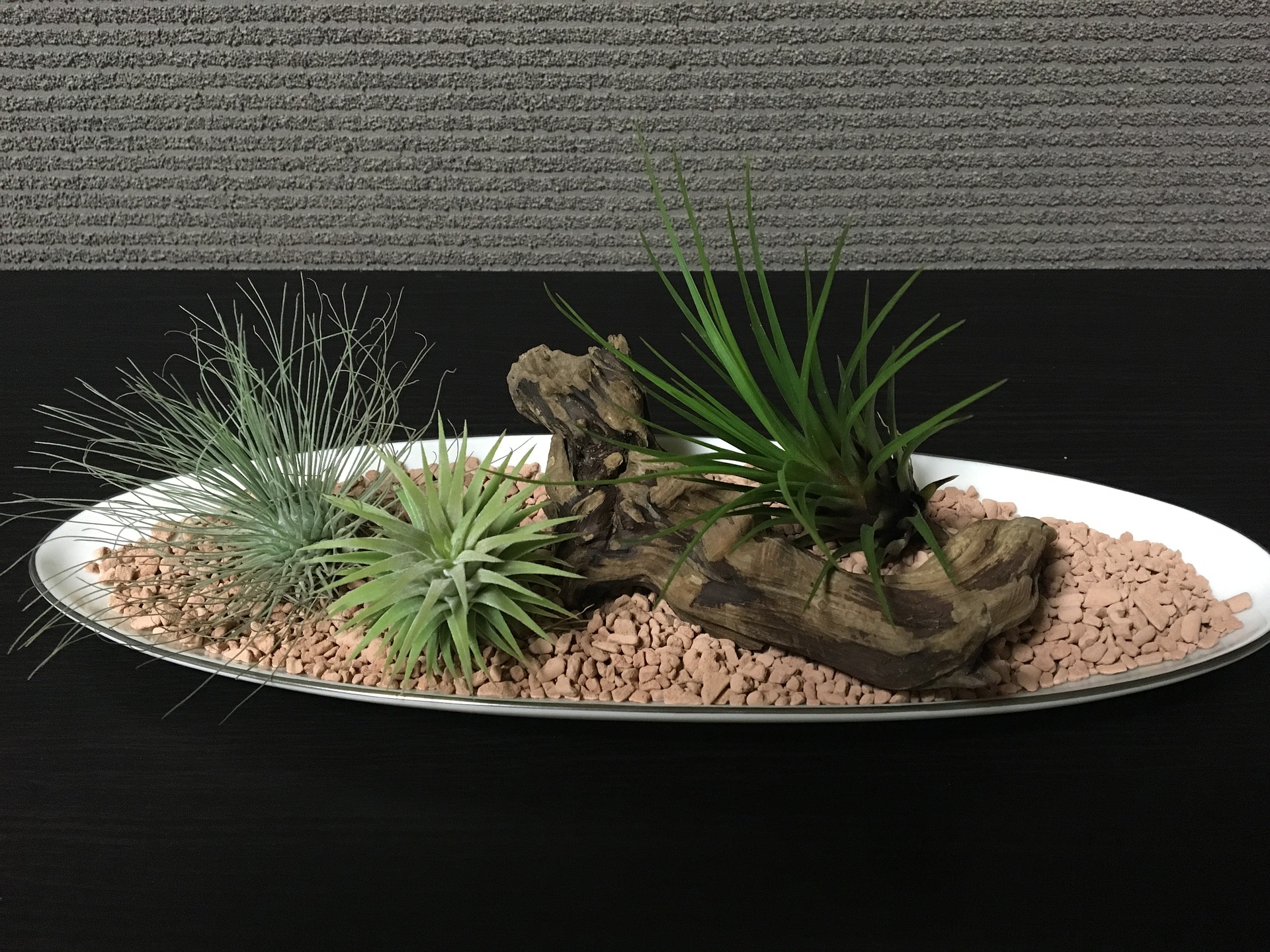- Home
- Air Plants
- How to Grow Air Plants
How to Grow Air Plants
Learn how to grow air plants, one of the easiest low-maintenance houseplants to take care of.
What is the best thing about air plants? They don't need any dirt to grow, so there is no need for messy soil or watering cans.
However, your air plant still needs a little care, mostly just a spray of water mist every few days and an occasional good soak in a bowl of water. If you travel frequently, no problem: mist them well and sit them above a saucer of water before you leave to increase their local humidity (don't let them actually touch the water in the saucer, or they will rot), then give them a good soak when you get back.
Air Plant Care Summary
Looking for information on air plants for beginners? This is a good basic summary of airplants care:
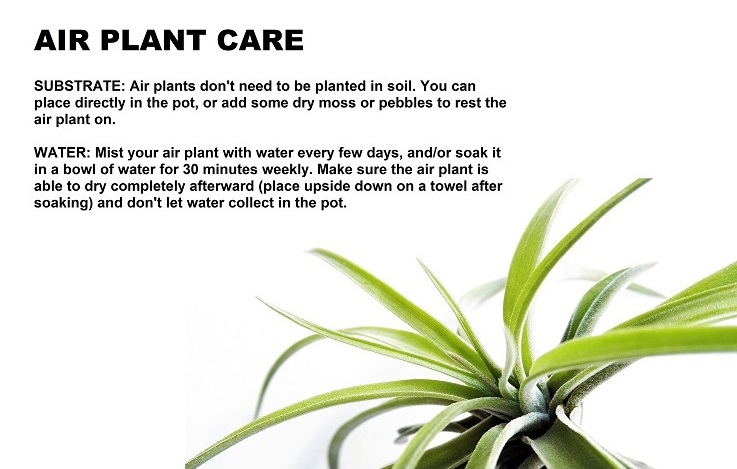
If you just follow these tips, you will quickly learn how to grow airplants that are happy and healthy!
Tips for Growing Air Plants
Air plants are tropical epiphytes. An "epiphyte" is a plant that grows on top of other plants, rather than in soil. They are not parasites - they just use the other plant as support. They gather all their water and nutrition from the air and rain.
In the case of air plants, they naturally grow on trees in tropical jungle environments. They do grow small roots that help them hold onto the tree bark, but they don't drink water through their roots. Instead, air plants have little silvery hairs or scales on their leaves called trichomes which are like tiny sponges absorbing all the water and nutrients that the plant needs.
In nature, the air plant's trichomes would gather water and nutrients from rain and runoff from their host plant. As a houseplant, you need to spray or soak your air plant with water to replicate the rain. This is the most important thing to remember when learning how to grow air plants. Any plant will eventually die without water, including air plants!
Water Needs
Air plants don't need soil, and they don't need traditional watering since they can't drink water through their roots. But air plants still need water!
You water air plants one of two ways:
- Spraying your air plant with a water mist (you can buy plant mister bottles at most garden stores or online)
- Soaking your air plant in a bowl of water. Make sure to dry it upside down on paper towel afterward so no water collects in the base.
Depending on the humidity of your environment you might need to water your air plant weekly, or every couple of days. Personally, I spray my air plants every few days and only soak them if they look very dry.
Sun
Air plants don't need a lot of sun. In their natural jungle habitat they will experience sunlight filtered through the tree leaves, so bright indirect light or partial (morning) sun would be fine.
You can also use a grow light if your air plant is away from a window (like in a bathroom without sunlight) but don't have the light too close to your plant. So long as it's at least six inches away it should be fine.
Temperature & Humidity
Since air plants come from a tropical environment, they like warmth and humidity. They will be fine in a typical inside temperature, but keep them away from drafty windows or air conditioning vents.
Different Ways to Grow Air Plants
How to Grow Air Plants Without Soil
Air plants usually are grown without soil (which is why they are called air plants).
So if they don't need soil, how do you grow them? You can balance your air plant on almost anything, so long as they are not directly touching a damp surface or harmful material (for example, copper is not healthy for air plants, but other metals are fine). You can purchase special air plant holders, use tiny plant pots, candle holders, pieces of driftwood, shells, place them in terrariums, hang them from the ceiling... So long as they get some light, airflow (but not a cold draft), and you can access them for misting or soaking, any surface or container is fine. Use your imagination and experiment with how to grow air plants in your environment!
How to Grow Air Plants in Glass
Here are some tips on how to plant air plants in glass containers. You can use a glass vase, candlestick, terrarium globe, bauble and many other glass options for your air plant.
If you're placing your air plant inside a glass terrarium globe or bauble, make sure it stays completely dry inside the globe (remove the air plant to water & only return it when it has dried out).
A glass vase made for a single-stem rose, or a glass candlestick can make pretty vessels to display an air plant also. You can balance the air plant on top and remove it on a weekly basis to soak or spray. You can also spray it in place every few days, just make sure that water doesn't collect inside the glass or around the base of the plant.
You can use many types of items as air plant holders. For example, the silver owl below is actually a candle holder, but it makes a perfect home for this wispy tillandsia argentea!
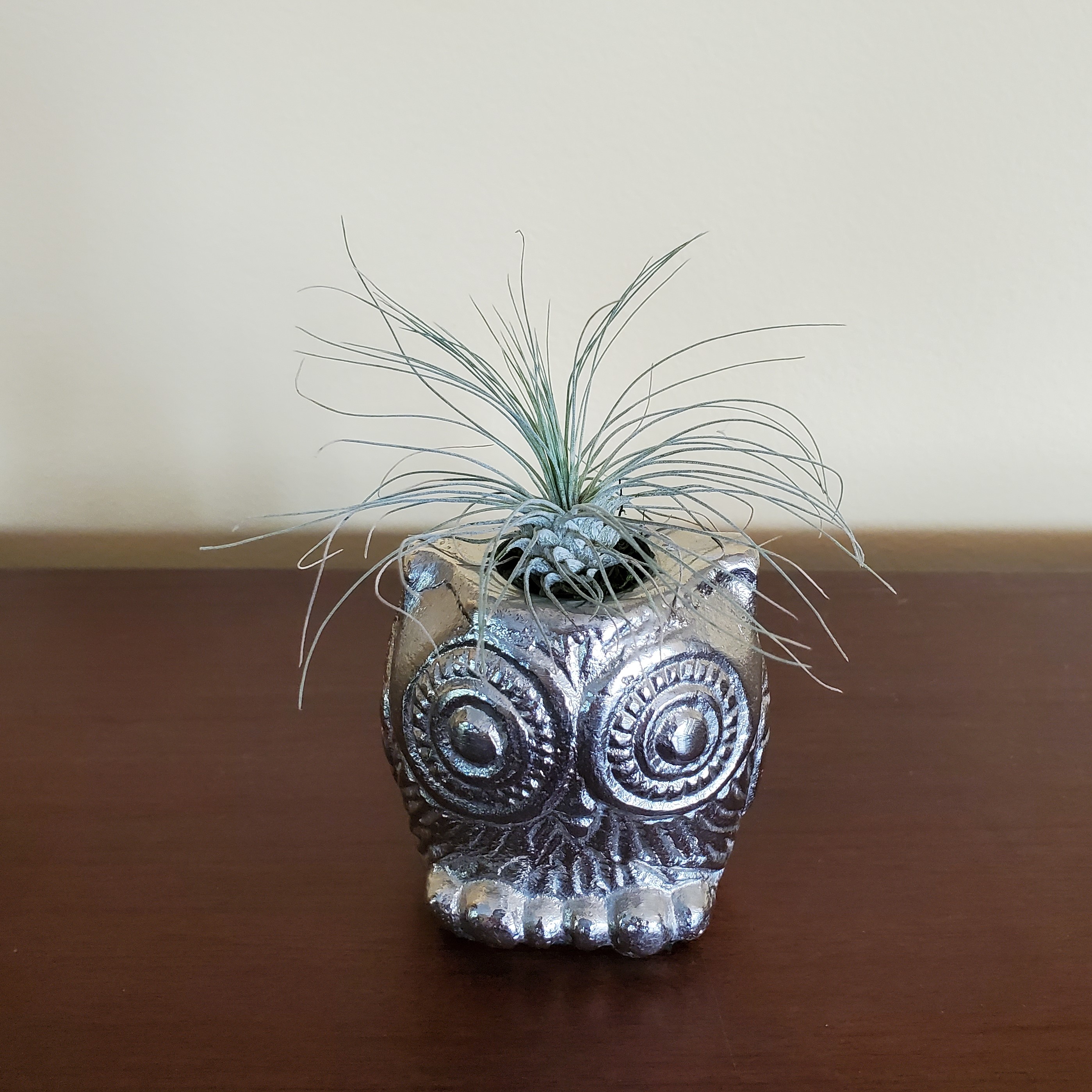
How to Grow Air Plants on Wood
Would you like to know how to grow air plants on driftwood or other wood surfaces?
Wood is the closest to the airplant's natural environment growing on the sides of trees, and you may find a happy air plant will grow little roots to hold itself in place.
You can tuck the air plant into small crevices in the wood, or use plant-safe glue to secure it. Make sure that both the air plant and the wood are able to dry out quickly after spraying with water, because wet wood will cause rot that will eventually kill your air plant.
How to Grow Air Plants in Shells
Air plants may not grow on shells in nature, but a pretty shell can make a very convenient, attractive holder to display your air plant. You can tuck the air plant into a crevice of the shell, using small rocks or dry moss to hold it in place. You can also use plant-safe glue to attach the air plant to the shell if you want.
Just make sure when you spray the air plant with water that the water does not gather in the moss or shell crevices. You can either remove the air plant to water every few days or so, or turn it upside down after watering to make sure it dries completely.
Growing Air Plants with Other Plants
Since air plants are natural epiphytes, you can also place them on or around your other larger houseplants. Just make sure that they don't rest on wet soil or moss, and don't stay wet after watering your houseplants.
If you want to place them around another plant on top of the soil, then use a dry soil-topper to place your air plant on, such as a rock, a pine cone, a crystal or polished stone, or a small pile of gravel.
Questions About Growing Air Plants
How do you keep air plants alive?
It is very easy to keep air plants alive. The main thing to remember is that they come from a warm, humid environment. Since your home is probably fairly dry (especially in winter) they will need to be misted every few days. But don't worry if you have to leave them for a while without water (if you go on vacation, for example). Just give them a good soak when you get back.
How long does it take to grow air plants?
Usually, air plants are sold already fully grown. They are quite slow growers, so don't expect to see rapid changes in your air plant, although over time you will see new growth appearing from the center of the plant, and a "baby" or pup plant may appear on the side. When the pup is large enough (about half the size of the mother air plant) you can separate it if you want to, or you can keep them together to eventually form a clump.
Where do air plants grow?
In their natural environments, air plants grow in warm, humid locations on the branches of trees. Spanish moss, which is commonly seen hanging from trees in the Southeastern United States, is actually one type of air plant.
Do air plants continue to grow?
Air plants do continue to grow, although quite slowly. If you know how to grow air plants, then your plant will be quite happy even if it doesn't seem to be growing much.
More About Air Plants & Other Gardens in Pots
If you're looking for more information on how to grow air plants successfully, then learn more about air plant display here.
Or explore ideas for how to grow succulents and cacti also.
- Home
- Air Plants
- How to Grow Air Plants
